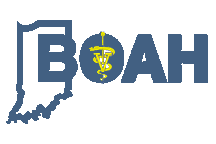Pseudorabies (PRV) is a highly contagious infectious disease of swine caused by a herpes virus. As the only primary hosts, swine can contract the disease, recover, and remain carriers.
Carrier animals with PRV do not shed the virus on a continual or daily basis. Once the acute infection is over, the virus becomes dormant within the body. The carrier animal may never again shed the virus or may shed virus when the animal is stressed, i.e., chilling, moving, breeding, farrowing, or any other type of stress. That is why herd cleanup plans must address all factors that cause stress.
Other species of animals are considered dead-end hosts, that is, if they become infected they die.
Species | Resistance to Infection | Outcome of Infection |
Pig | low | variable |
Dog | high | fatal |
Cat | high | fatal |
Cattle | moderate | fatal (with exceptions) |
Sheep | low | usually fatal |
Raccoon | moderate | fatal |
Opossum | high | fatal |
Rat | high | fatal |
Mouse | high | fatal |
Other Wildlife | ? | fatal |
Environmental Contamination
Outside of a host animal's body, the virus is very susceptible to the elements. PRV cannot live long without some degree of protection. The virus moves within the herd through direct animal-to-animal contact, or indirectly via respiratory excretions. Snotty nasal discharge can stick to panels, workers' clothing, feed, bedding, boots, trucks, and other equipment. Non-infected hogs can pick up the disease after contacting such contaminated items.
Research at Iowa State University on the environmental survivability of the PRV virus shows:
PRV is very susceptible to pH levels below 4 and above 9.
Survival is temperature dependent.
The virus can survive only a few hours on clean concrete or mixed in dirt.
The PRV virus can survive up to three days on plastic and steel.
Two days is the virus' survival time in manure and lagoon water.
Whole corn can sustain the virus up to four days.
The PRV virus mixed with body excrement can survive on the soil for up to six days.
Under optimal pH and temperature conditions, some virus particles may survive as long as 40 days to 120 days. However, these conditions are unlikely to exist.
Biosecurity
Management procedures that revolve around sound biosecurity practices are very important in all disease control programs. Maintaining a strict biosecurity program is the best way producers can protect their investments in livestock.
At a minimum, every swine operation should:
Isolate and retest of all incoming livestock.
Minimize and control of human traffic into and within the herd. People should not move indiscriminately from known infected areas of a unit throughout the rest of the operation. This rule applies to all maintenance workers, plumbers, electricians, etc., as well as employees.
Control of feed supply sources and the feed delivery processes.
Control wildlife, rodents and pests on the site.
Consider geographical location when planning a new swine production unit.
Separate different units of production, e.g., gestation, farrowing, nursery, grow/finish.
Control vehicle traffic on and off the production site. Clean and disinfect vehicles, trailers and boots after every use, and before they're used again.
More Information
More information about PRV and herd cleanup plans are available from the Indiana State Board of Animal Health at 317/544-2400 or via email at animalhealth@boah.in.gov.
